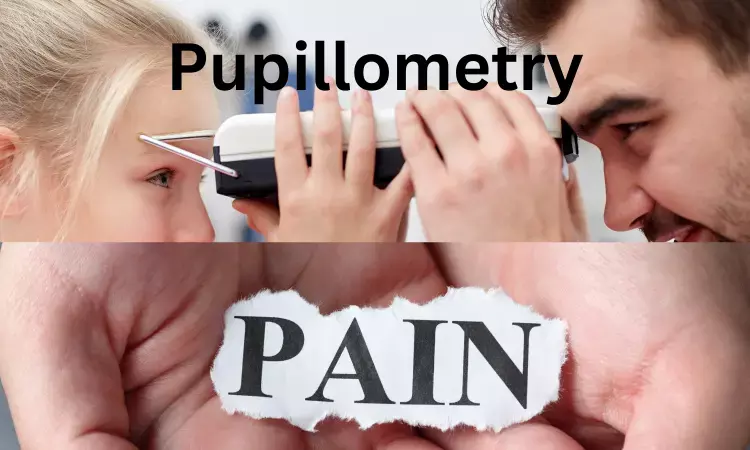- Home
- Medical news & Guidelines
- Anesthesiology
- Cardiology and CTVS
- Critical Care
- Dentistry
- Dermatology
- Diabetes and Endocrinology
- ENT
- Gastroenterology
- Medicine
- Nephrology
- Neurology
- Obstretics-Gynaecology
- Oncology
- Ophthalmology
- Orthopaedics
- Pediatrics-Neonatology
- Psychiatry
- Pulmonology
- Radiology
- Surgery
- Urology
- Laboratory Medicine
- Diet
- Nursing
- Paramedical
- Physiotherapy
- Health news
- Fact Check
- Bone Health Fact Check
- Brain Health Fact Check
- Cancer Related Fact Check
- Child Care Fact Check
- Dental and oral health fact check
- Diabetes and metabolic health fact check
- Diet and Nutrition Fact Check
- Eye and ENT Care Fact Check
- Fitness fact check
- Gut health fact check
- Heart health fact check
- Kidney health fact check
- Medical education fact check
- Men's health fact check
- Respiratory fact check
- Skin and hair care fact check
- Vaccine and Immunization fact check
- Women's health fact check
- AYUSH
- State News
- Andaman and Nicobar Islands
- Andhra Pradesh
- Arunachal Pradesh
- Assam
- Bihar
- Chandigarh
- Chattisgarh
- Dadra and Nagar Haveli
- Daman and Diu
- Delhi
- Goa
- Gujarat
- Haryana
- Himachal Pradesh
- Jammu & Kashmir
- Jharkhand
- Karnataka
- Kerala
- Ladakh
- Lakshadweep
- Madhya Pradesh
- Maharashtra
- Manipur
- Meghalaya
- Mizoram
- Nagaland
- Odisha
- Puducherry
- Punjab
- Rajasthan
- Sikkim
- Tamil Nadu
- Telangana
- Tripura
- Uttar Pradesh
- Uttrakhand
- West Bengal
- Medical Education
- Industry
Pullilometry not effective method to assess pain in the emergency department

Pain management is crucial in Emergency Department(ED) patients. Research over the past several decades has led to significant improvement in the recognition and treatment of pain among all age groups. However, despite significant advances in the understanding of the mechanisms of pain much is yet to be known.
Popularly two dynamic pupillary measures are used in conscious subjects after a surgical procedure that are known to correlate to the magnitude of ongoing pain. However a recent study conducted by Belgian investigators suggests clinicians should not rely on pupil diameter or its response to light to assess pain levels among emergency department (ED) patients, and it is reported in the European Journal of Pain.
Charles Gregoire and team aimed to test the ability of dynamic measures derived from pupillometry to evaluate pain intensity in conscious adult patients admitted to the ED. The study was a prospective, interventional, single-centre study performed between August 2021 and January 2022 (NCT05019898). An assessment of self-reported pain intensity was performed on ED admission by the triage nurse using a numeric rating scale (NRS). This was followed by two dynamic measures derived from pupillometry that were previously correlated with pain perception: the pupillary unrest under ambient light (PUAL) and the pupillary light reflex (PLR).
The key findings of the study are
• Among the 313 analysed patients, the median age was 41 years, and 52% were women.
• Overall, 40.0% of patients rated their pain as absent or mild (numeric rating scale score less than 4), 32.3% as moderate (4 to less than 7), and 27.7% as severe (7 or greater).
• Patients’ scores did not correlate either with the pupillary unrest under ambient light measure (r, 0.007) or with the pupillary light reflex measures of baseline diameter (r, −0.048), decrease (r, 0.024), latency (r, 0.019), or slope (r, −0.051). Findings were similar for men and women individually.
• Similarly, the pupillometry measures could not discriminate patients with moderate to severe pain (defined as NRS ≥4).
Researchers ended Pupillometry does not appear to be an effective tool to evaluate pain in the ED environment. Indeed, too many factors influencing the sympathetic system and thus the dynamic pupillary measures are not controllable in the ED.
Reference: Charles Gregoire, David Charier et al ; Comparison between pupillometry and numeric pain rating scale for pain assessments in communicating adult patients in the emergency department; European journal of pain, 11 June 2023, DOI:https://doi.org/10.1002/ejp.2137
MSc. Neuroscience
Niveditha Subramani a MSc. Neuroscience (Faculty of Medicine) graduate from University of Madras, Chennai. Ambitious in Neuro research having worked in motor diseases and neuron apoptosis is interested in more of new upcoming research and their advancement in field of medicine. She has an engrossed skill towards writing and her roles at Medical dialogue include Sr. Content writer. Her news covers new discoveries and updates in field of medicine. She can be reached at editorial@medicaldialogues.in
Dr Kamal Kant Kohli-MBBS, DTCD- a chest specialist with more than 30 years of practice and a flair for writing clinical articles, Dr Kamal Kant Kohli joined Medical Dialogues as a Chief Editor of Medical News. Besides writing articles, as an editor, he proofreads and verifies all the medical content published on Medical Dialogues including those coming from journals, studies,medical conferences,guidelines etc. Email: drkohli@medicaldialogues.in. Contact no. 011-43720751


